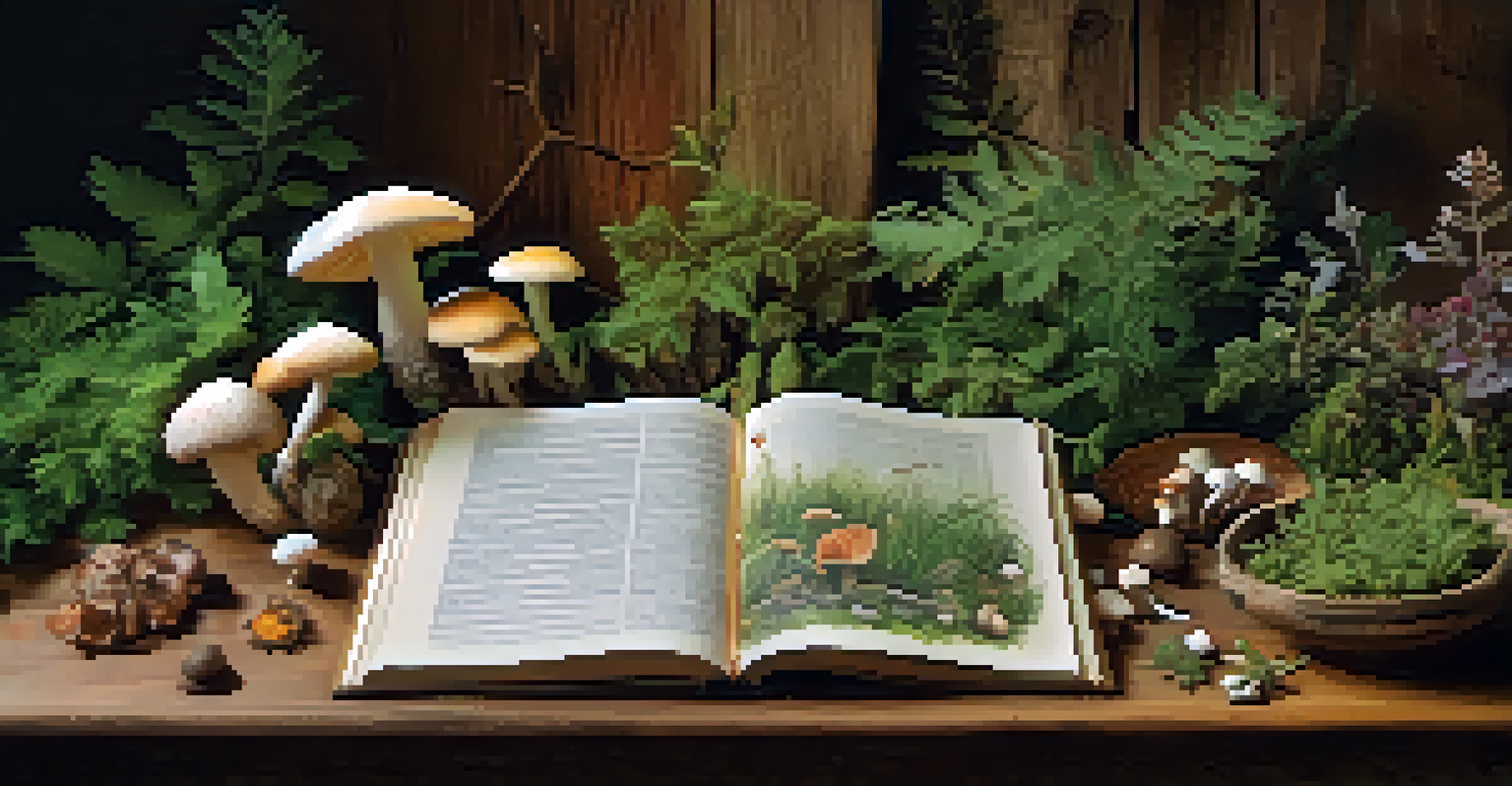How Gender Shapes Hallucinogenic Experience Narratives

Understanding Hallucinogenic Experiences and Their Narratives
Hallucinogenic experiences can be profound, often leading to altered perceptions and deep emotional insights. These experiences vary widely among individuals, influenced by personal, cultural, and social factors. One significant aspect that shapes these experiences is gender, which can affect how individuals interpret and narrate their journeys.
The narratives we create around these experiences are not just personal stories; they reflect broader societal norms and expectations.
The narratives we create around these experiences are not just personal stories; they reflect broader societal norms and expectations. For instance, how we express vulnerability, fear, or enlightenment during a hallucinogenic experience may differ based on gender roles ingrained in us from a young age. This gendered lens provides a rich area for exploration in understanding the intricacies of such experiences.
Moreover, examining these narratives helps us appreciate the diversity of human experience. By contrasting how different genders articulate their hallucinogenic journeys, we can uncover common threads, unique perspectives, and even the impact of societal pressures on mental health and self-expression.
Gender Differences in Hallucinogenic Experience Reports
Research suggests that men and women may report different emotional responses during hallucinogenic experiences. For example, women are often found to emphasize emotional depth and interpersonal connections, while men might focus on visual or sensory aspects. This difference can lead to distinct narratives that highlight varying priorities in how individuals process their experiences.

Additionally, the context in which these substances are consumed can shape the narratives that emerge. Women may feel more inclined to share their experiences in communal settings, fostering connection and empathy, whereas men may narrate their experiences in a more solitary or competitive context. These environments can further influence the storytelling process, creating unique narratives that reflect gendered dynamics.
Gender Shapes Hallucinogenic Narratives
Individuals' gender influences how they interpret and narrate their hallucinogenic experiences, reflecting broader societal norms.
Understanding these differences is crucial for both academic research and therapeutic practices. It allows for a more nuanced approach to integrating hallucinogenic experiences into psychological frameworks, tailoring interventions that resonate with individuals' lived realities based on their gender.
Cultural Influences on Gender and Hallucinogenic Narratives
Culture plays a significant role in shaping how gender influences hallucinogenic experiences. In some cultures, women might be more empowered to share their emotional and spiritual journeys, while in others, they may face stigma or restriction. These cultural contexts can dramatically alter the narratives that are produced, making it an essential area of study.
Understanding these differences is crucial for both academic research and therapeutic practices.
Moreover, cultural expectations surrounding masculinity and femininity can dictate how individuals approach hallucinogenic substances. For instance, men might feel pressured to portray strength and control, leading to narratives that downplay vulnerability. In contrast, women may narrate their experiences with more emotional fluidity, reflecting societal acceptance of women's emotional expression.
Exploring these cultural dynamics sheds light on the intersection of gender, culture, and the psychedelic experience. It emphasizes the need for culturally sensitive approaches to understanding and supporting individuals as they navigate their unique hallucinogenic journeys.
The Role of Socialization in Shaping Experiences
From a young age, socialization teaches individuals how to express their feelings and experiences. This process can significantly impact the narratives formed around hallucinogenic experiences. For instance, boys may be socialized to suppress emotions, which can lead to narratives that lack emotional depth or vulnerability, while girls might be encouraged to articulate their feelings more openly.
These socialization patterns not only affect the immediate experience but also the retrospective storytelling that follows. Individuals often draw upon their socialized norms when recounting their experiences, shaping how they perceive and articulate the journey. This influence can lead to a reinforcement of stereotypes, where certain narratives are valorized while others are marginalized.
Cultural Context Affects Experiences
Cultural dynamics significantly impact how gender roles dictate the sharing and interpretation of hallucinogenic journeys.
Recognizing the impact of socialization on narrative formation provides a pathway toward more inclusive discussions about hallucinogenic experiences. It encourages a deeper understanding of how gender roles and expectations can shape personal stories and the societal narratives surrounding them.
Gender and the Therapeutic Potential of Hallucinogens
The therapeutic potential of hallucinogens is becoming increasingly recognized, particularly in treating mental health conditions. However, gender differences in experiences can influence therapeutic outcomes. For example, women may respond more positively to therapies that emphasize emotional connection and interpersonal relationships, while men might benefit from approaches that focus on cognitive or sensory aspects.
This understanding highlights the importance of tailoring therapeutic approaches to the individual, considering their gendered experiences and narratives. Therapists can create customized interventions that resonate with clients’ unique perspectives, leading to more effective treatment outcomes. By acknowledging the interplay of gender and therapeutic practices, we can advance the field of psychedelic therapy.
Furthermore, exploring gender in therapeutic settings can foster a safe space for open dialogue about feelings and experiences. This openness can enhance the healing process, allowing individuals to fully integrate their hallucinogenic experiences into their lives, ultimately promoting mental well-being.
The Impact of Gender on Group Dynamics in Psychedelic Sessions
Group settings can significantly influence hallucinogenic experiences, with gender playing a key role in shaping group dynamics. Men and women may approach group interactions differently, affecting how experiences are shared and understood. For instance, women may foster a more collaborative atmosphere, while men might engage in competitive or hierarchical interactions.
These dynamics can affect the quality of the shared experience, with women potentially feeling more supported in expressing vulnerability and emotions. Conversely, men may find themselves navigating a landscape where emotional expression is less encouraged, impacting the richness of their narratives. Understanding these group dynamics can enhance the effectiveness of group therapy sessions involving psychedelics.
Therapeutic Approaches Must Adapt
Recognizing gender differences in hallucinogenic experiences is crucial for tailoring therapeutic interventions to enhance treatment outcomes.
By recognizing the influence of gender on group interactions, facilitators can create a more inclusive environment. This can lead to more meaningful exchanges and a deeper understanding of the varied experiences within the group, ultimately enriching the collective narrative.
Future Directions: Research and Advocacy in Gender and Psychedelics
As interest in psychedelics continues to grow, there is a pressing need for further research into how gender shapes hallucinogenic experiences. Current studies often overlook these differences, leading to a gap in understanding the full spectrum of experiences. Future research should prioritize gender as a critical variable to ensure comprehensive insights into psychedelic use and its effects.
Advocacy for gender-sensitive approaches in both research and therapeutic settings is crucial. By promoting awareness of how gender influences experience narratives, we can foster more inclusive practices that resonate with diverse individuals. This advocacy can help dismantle stereotypes and encourage a broader acceptance of varied experiences within the psychedelic community.

Ultimately, exploring the intersection of gender and hallucinogenic experiences can lead to richer narratives and a more nuanced understanding of the human psyche. As we continue to uncover these layers, we pave the way for a more inclusive and empathetic approach to psychedelics and their integration into society.